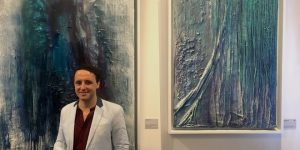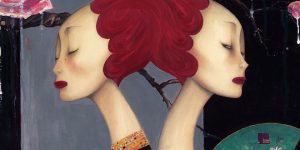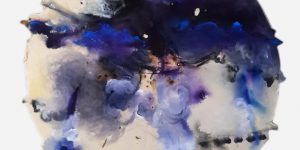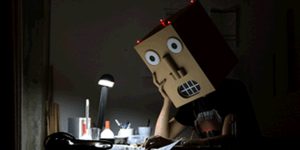Miaja Gallery, Singapore presents ‘Silent Cities: A Post-Metaphysical Expression’ exhibition
Italian artist Sebastiano Navarra commits dreams to canvas in his upcoming exhibition at Miaja Gallery

Sebastiano Navarra, Profile Picture. Image courtesy of Miaja Gallery
Miaja Gallery will present Sebastiano Navarra’s ‘Silent Cities: A Post-Metaphysical Expression’ between 2 June and 31 August. Before his career as an artist, the octogenarian worked for the advertising agency J. Walter Thompson for nearly a decade in Bogotá, Colombia. As a painter, he is known for depicting surprising pairings of famous historical figure with contemporary objects.
In ‘Silent Cities’, viewers will be presented with Navarra’s rendition of Metaphysical Art, which is a direct translation of the Italian Pittura Metafisica. The movement as developed by modern artists Giorgio de Chirico and Carlo Carra around the time of World War I, portraying public spaces one would find in Italian cities empty save for objects that do not seem to belong, to go beyond reality into the workings of the mind.

Sebastiano Navarra, 2016, ‘SILENT CITIES #13 Post Metaphysical’, acrylic on canvas, 120x120cm. Image courtesy of Miaja Gallery
Keeping with the style of painting, the background of Navarra’s works in the series is dominated by curvilinear representations of buildings, while in the foreground, odd singular objects that look like stone sculptures, such as the Pegasus or the sphinx pops up, transporting the viewer to a dreamscape where jarring elements coexist.
Art Republik speaks with the artist to find out more.
You’ve previously put up an exhibition, ‘Puzzle: The Evolution of Communication’ at Miaja Gallery in early 2016. How did you come to work with the gallery, and what has the experience been like thus far?
I came to know Isabelle Miaja after an exhibition in Bali, and she proposed to become my agent in Singapore. I have had a great relationship with the gallery since then, and the Miaja family’s support is very important to me.
Could you tell us about the works in ‘Silent Cities’ that will be presented at Miaja Gallery in June? And how does this body of work depart/build on ‘Puzzle’?
Given that the first part of my professional life was in advertising as an art director, ‘Silent Cities’, as with ‘Puzzle’, is created to be understood and appreciated instinctively, as one does with pop art. The works in ‘Silent Cities’ are visual expressions of the fantastical dreams that I have.
What has been key in your artistic process?
Memory is an archive of images that present themselves when needed, and I feel that my memory has served me well to allow me to combine what has come before with what is going on in the present day to create my artworks.
You spent nine years as an art director in South America. How has your training and your time there informed your work as an artist?
I believe my experience in visual communication has helped me to communicate my ideas through my artworks in an easily comprehensible and enjoyable way. The colourful natural landscape of South America and the importance of signs in the culture of the people have also had a lasting impact on me and my work.
How has your artistic practice evolved over the years?
In my time as an art director, I had to work with very precise rules. When I became an artist, I entered a very free world where I could express myself. It took some getting used to, and the first works I made as an artist were probably excessively stylised. However, slowly but surely, this changed, and I began to make meaningful artworks.
You have created works in various mediums. Which medium do you like working in the most and why?
For me, it is imperative to decide on the medium I want to work on as a first step to making the artwork, and I do this after careful research and consideration. This was the same for both ‘Puzzle’ and ‘Silent Cities’.
And what would you say is the greatest pleasure of being an artist?
I would say the freedom to express myself, and the luxury of amusing and surprising myself in my artistic practice. I also like to make viewers and collectors of my artworks happy. I want to continue making them curious about what it is that I am presenting to them in my work.
To find our more, visit Miaja Gallery. More information at miajagallery.com
This article was originally published in Art Republik.









